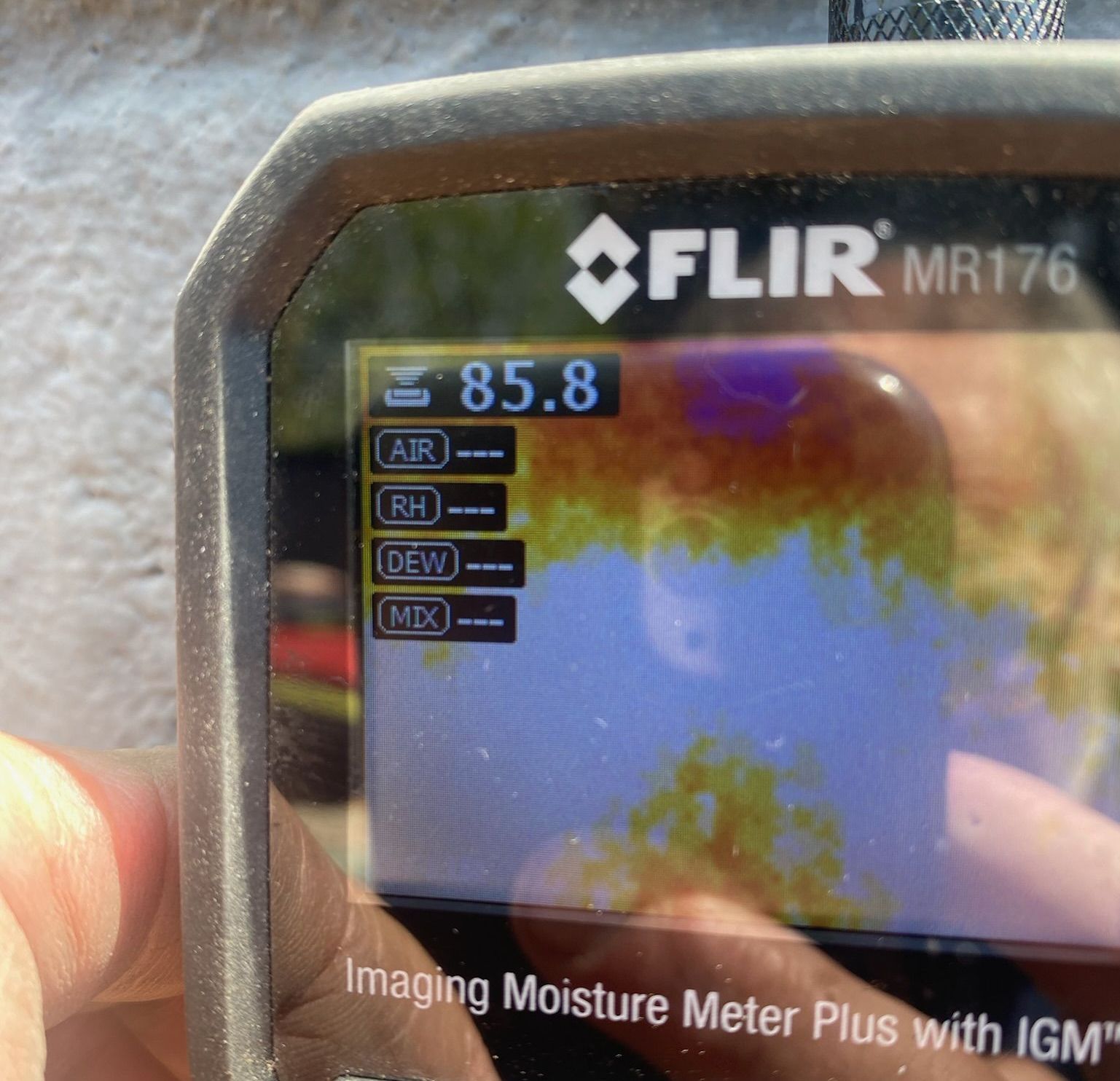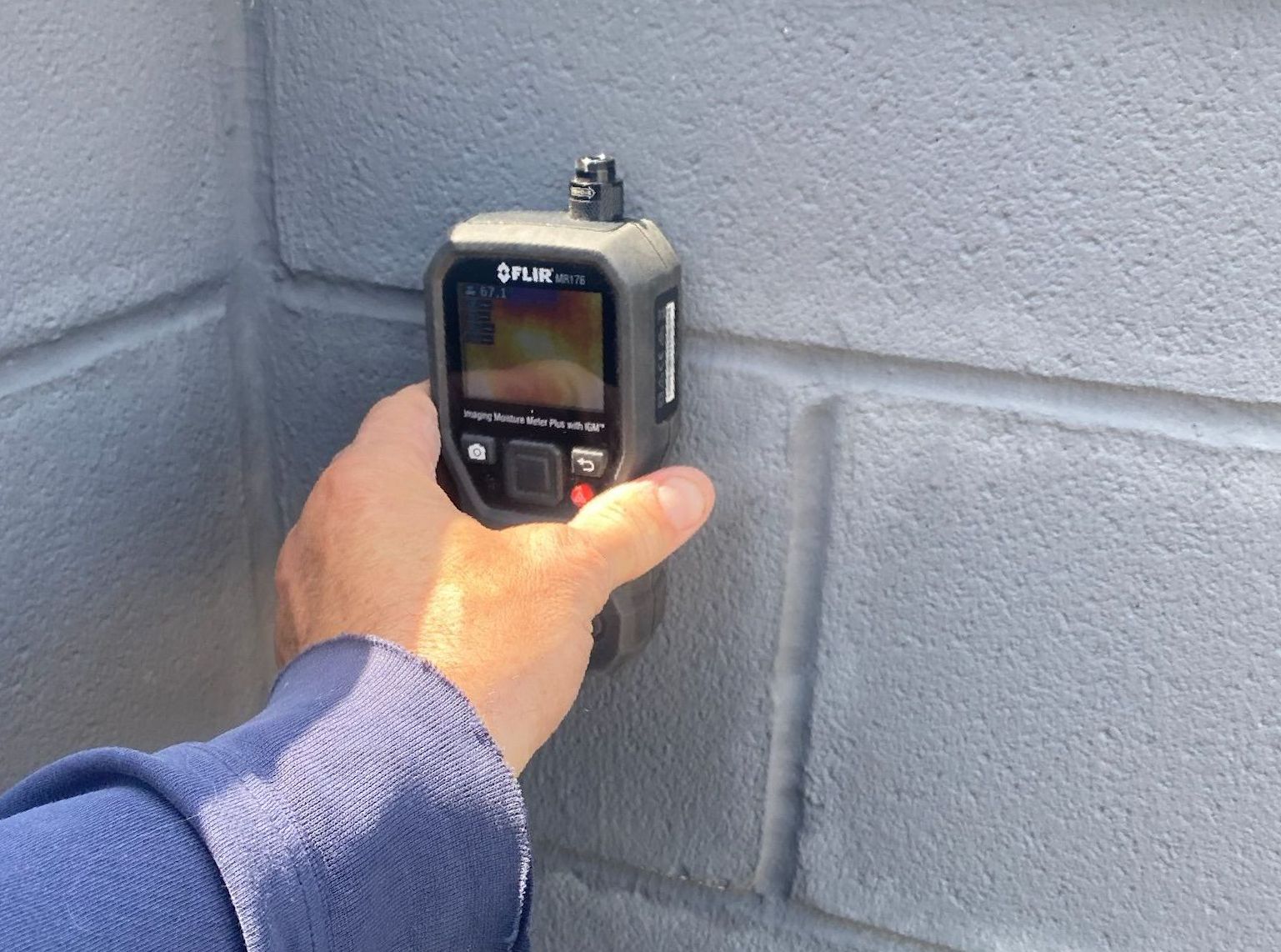Expert Leak Diagnosis in Chicago
Leak Analysis & Repair Guidance
Question:
We sealed our building, but it still leaks – what's going on?
Answer:
The water was trapped in your walls before you sealed it. In the summer, trapped water will be pushed into your home by vapor drive. Its physics, wet moves to dry, hot moves to cold.
It's necessary to vent a wet building that has been sealed. There is nowhere for trapped water to go, except to the interior. Installing vented flashing protects against additional rain water coming in through the top of the wall
AND allows trapped water vapor to escape. Vented flashings also prevent naturally occurring condensation from accumulating.

Moisture Meter readings explained: "Dry" masonry walls read between 30-40% moisture content. This wall (85.8%) is 40-50% more wet than a typical "dry" masonry wall. This wall needs to be vented and sealed.
Moisture meter readings...
Typical spring in Chicago... It rains everyday for a 3 weeks with 25-45 mph winds from the Northwest. Then its suddenly summer and 90+ degrees for the next 3 weeks with no breeze.
After a week of heat and humidity, the water trapped in the walls transforms into moisture vapor which can expand up to 1600 times – it needs somewhere to go. It will either push sealant/elastomeric paint off the exterior walls (bubbling/peeling) or join you for dinner or both.
When Wet Building Solutions diagnoses leaks, we use all our senses, plus moisture meters and thermographic cameras and our decades of experience, to determine the approximate percentage of moisture trapped in your walls.
We also use Rilem testing (see video below) which gives us a good idea of how porous the exterior of the walls are and indicates how effective the sealant on your walls actually is. There may be an inadequate amount of sealant or the sealant has eroded and is no longer effective.
A Rilem Test measures the porosity of the surface and/or mortar joints of a masonry wall. If the water in the tube absorbs into the wall quickly, the building needs to be sealed.
The usual leak suspects:
- The way the parapets are finished
- Flashing under capstones
- Damaged capstones, clay copings or metal copings
- Leg Length of the metal copings
- Sealant and type or lack thereof
- Pinholes in elastomeric coating
- Missing mortar or cracks in mortar
- Damaged concrete block (cracked in two, pitted or falling apart) or spalling brick (face of brick is flaking off)
- "Stone" details – the type of "stone", the installation pitch and flashing or lack thereof
- Transitions between material types and expansion joints
- Balcony connections to walls
- Doors, headers, sills and openings
- Windows, headers, sills and openings
- Chimneys, flashings and chimney caps
- Roof and all things roof related
We provide easy to read, plain English reports and cost ranges.

